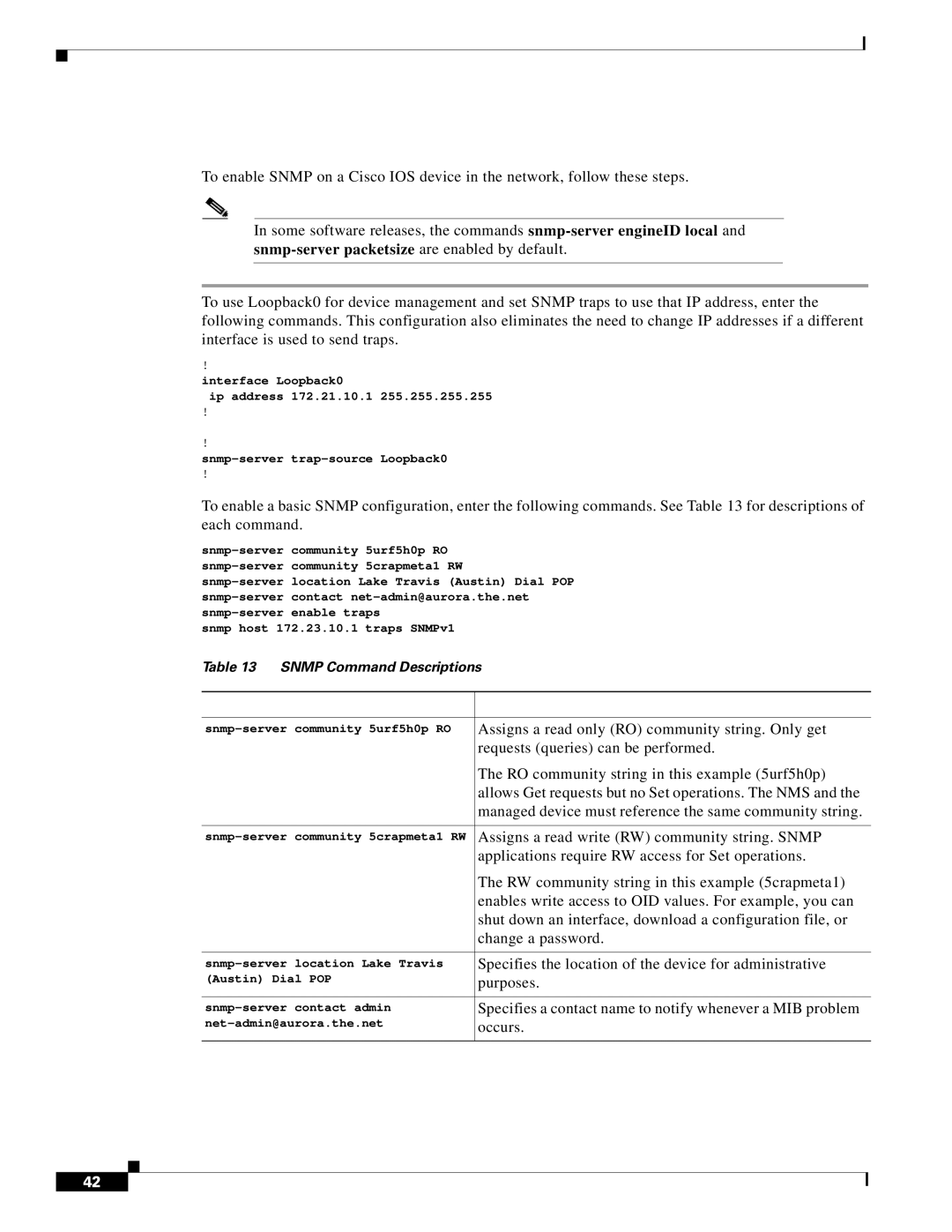
Task
About Enabling SNMP
Enabling SNMP
To enable SNMP on a Cisco IOS device in the network, follow these steps.
Note In some software releases, the commands
Step 1 To use Loopback0 for device management and set SNMP traps to use that IP address, enter the following commands. This configuration also eliminates the need to change IP addresses if a different interface is used to send traps.
!
interface Loopback0
ip address 172.21.10.1 255.255.255.255
!
!
!
Step 2 To enable a basic SNMP configuration, enter the following commands. See Table 13 for descriptions of each command.
snmp host 172.23.10.1 traps SNMPv1
Table 13 SNMP Command Descriptions
Command | Purpose |
|
|
Assigns a read only (RO) community string. Only get | |
| requests (queries) can be performed. |
| The RO community string in this example (5urf5h0p) |
| allows Get requests but no Set operations. The NMS and the |
| managed device must reference the same community string. |
|
|
Assigns a read write (RW) community string. SNMP | |
| applications require RW access for Set operations. |
| The RW community string in this example (5crapmeta1) |
| enables write access to OID values. For example, you can |
| shut down an interface, download a configuration file, or |
| change a password. |
|
|
Specifies the location of the device for administrative | |
(Austin) Dial POP | purposes. |
|
|
Specifies a contact name to notify whenever a MIB problem | |
occurs. | |
|
|
Basic Dial NMS Implementation Guide
"
